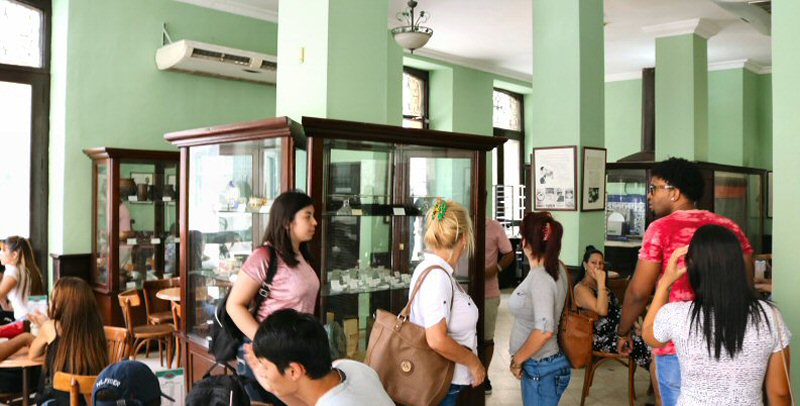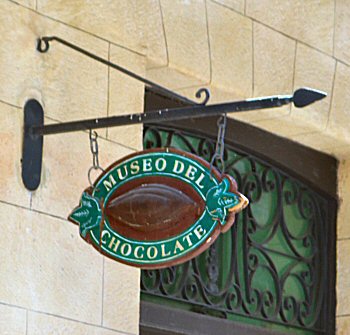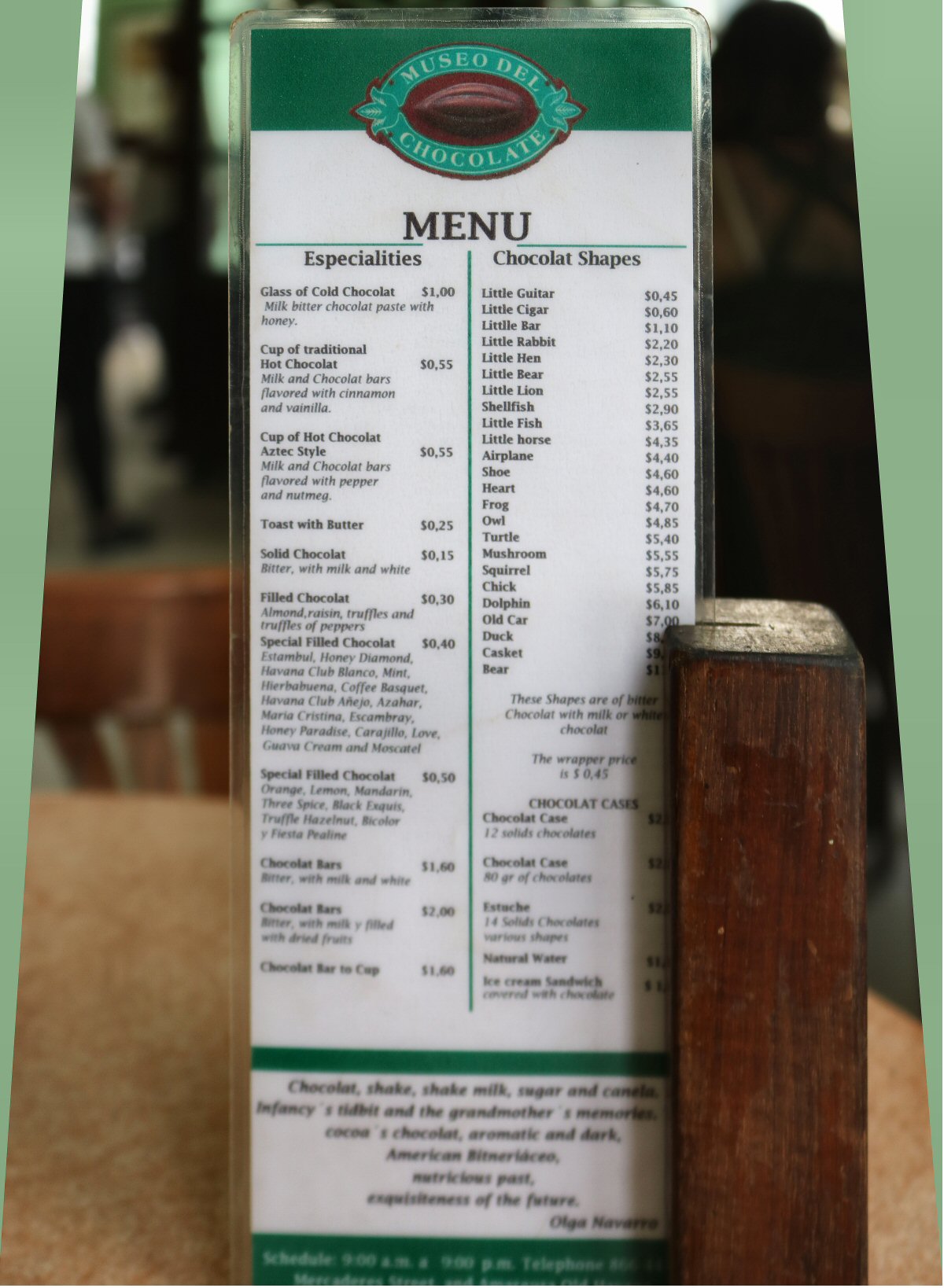
Cuban chocolate is a very high standard
chocolate, because it is produced by the cocoa from
Guantanamo region where the first cocoa plantations were
started by the French in 1650s. As of today, these cocoa
farms still exist, and they export most of their cocoa.
The Museo del Chocolate occupies the
ground floor of the Casa de la Cruz Verde (House of the
Green Cross) since 2003. When you approach the corner of the
Chocolate Museum, you can smell the flavor on the street.
The admission is free, but there may be a line outside,
particularly in the afternoon.
The place acquaints itself with the
name chocolate museum, but it would more appropriate to call
it the Café Fábrica de Chocolate, because all the products
of cocoa tasted here, were produced in this place. You can
even watch how the chocolate assortments are made at the
back of the premises. There are two rooms where you can
taste your chocolate: the main air-conditioned hall where
the visitors sit around the round marble tables, and the
other smaller one in the courtyard in the back of the main
hall that most of the visitors usually miss.
While the visitor sip a warming cup of
hot chocolate or a soothing glass of cold chocolate, it is
also possible to take a look at the panels on the walls of
the main hall that will take you on a tour through the
history of the chocolate, its harvesting and production,
since it was discovered by the Spanish conquistadors in the
New World and its use in this geographical area before the
European colonization. There are also a few posters of
famous foreign and national chocolate companies from various
times.
In the center of the main hall stands a
large four-sided glass case where a collection of porcelain
chocolate cups from England, Germany, France and Italy are
exhibited. These exponents are from the 19th and 20th
centuries. The French mustache cup, the cup with a
semicircular ledge inside that serves as a guard to keep the
mustache dry, is an interesting piece of the porcelain
collection. There are also some bakelite molds, used to make
chocolate shapes, and a container for jams, donated by the
Museum of the Royal Square of Brussels. The glass case
contains some ceramic chocolate pots, pitchers and large
English ceramic bowls, found in archaeological excavations
of the historic center. A sampling of the ingredients that
were used in the production of the chocolate and old Belgian
chocolate packaging materials are also exhibited in the
glass case.
If you want to drink something cold,
you can taste the cold chocolate (milk, bitter chocolate
paste with honey) that is thick and slightly bitter. There
are two kinds of hot chocolate: the traditional hot
chocolate (milk and chocolate bars flavored with cinnamon
and vanilla) and Aztec style hot chocolate (milk and
chocolate bars flavored with pepper and nutmeg)
At a separate counter you can buy solid
chocolate, dark, milky or white, or chocolate shapes that
are in figure of animals, such as rabbit, hen, bear, lion,
fish, frog, turtle, dolphin, squirrel, duck and horse, or
some objects, such as guitar, cigar, heart, shoe, old car,
airplane and casket. The visitor can buy also chocolate
filled with different fruits, such as raisin, orange, lemon,
mandarin, almond, hazelnut, or chocolate bars, bitter,
white, milky or filled with dried fruits. In all these
products the chocolate is of good quality and they melt
quickly, as they are made on site with no preservatives of
any kind.
Every Tuesday and Friday at 11 o’clock
in the morning, the visitors can watch the demonstration of
the techniques, applied to the artisan production of
chocolates or taste the drink, prepared in the traditional
way adding nutmeg and sweet pepper.
Museo del Chocolate (Chocolate Museum)


